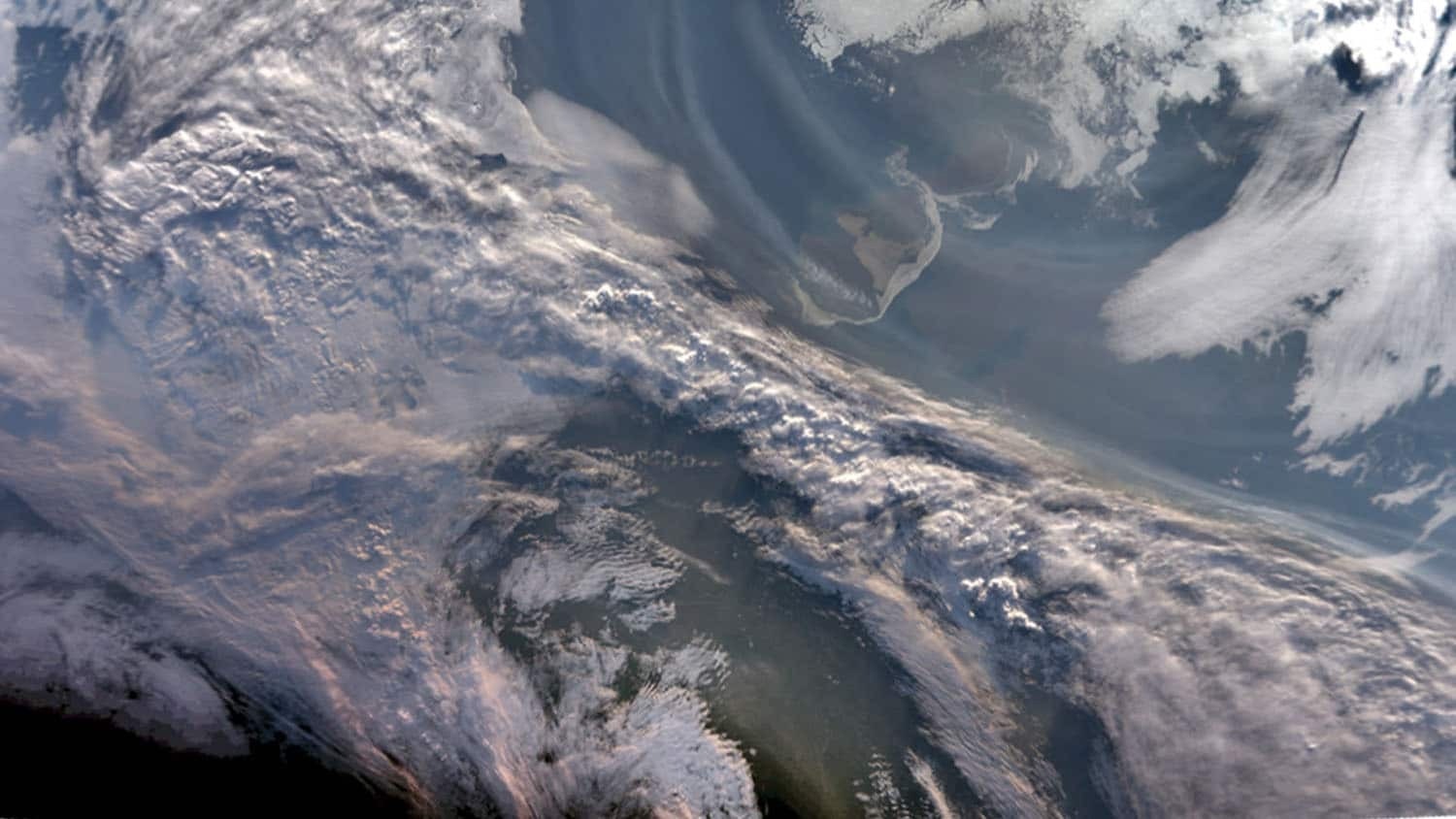Reviewed by Mila PereraSep 20 2022
A new study from North Carolina State University and the International Research Laboratory Takuvik (CNRS/Laval University) in Canada, suggests that smoke from a Siberian wildfire might have delivered nitrogen to the Arctic Ocean and intensified a phytoplankton bloom.
 Satellite image of plume in eastern Arctic Ocean, Aug. 2014. Image Credit: North Carolina State University
Satellite image of plume in eastern Arctic Ocean, Aug. 2014. Image Credit: North Carolina State University
The research highlights certain possible ecological impacts from wildfires in Northern Hemisphere, specifically as these fires become longer, larger, and more powerful.
In the 2014 summer, satellite imagery found a larger-than-normal algal bloom in the Laptev Sea, situated in the Arctic Ocean about 850 km (528 miles) south of the North Pole.
For a bloom that large to occur, the area would need a substantial influx of new nitrogen supply, as the Arctic Ocean is nitrogen-depleted. So we needed to figure out where that nitrogen was coming from.
Douglas Hamilton, Study Co-First Author and Assistant Professor, Marine, Earth and Atmospheric Sciences, North Carolina State University
Earlier, Hamilton was a research associate at Cornell University, where the study was performed.
Firstly, the scientists regarded the “usual suspects” for nitrogen input, like river discharge, sea ice melt, and ocean upwelling, but did not identify anything that would justify the amount of nitrogen needed for the bloom.
However, at the same time, unusually large wildfires in Siberia, Russia, situated directly upwind of the bloom, had burned around 1.5 million hectares (or around 3.5 million acres) of land.
The scientists moved their focus to the composition of the atmosphere. They employed the Community Earth System Model (CESM), a computer model that can imitate what happens to emissions from human and natural sources as they arrive and depart the atmosphere.
Data concerning temperature, wind, and atmospheric composition — along with the wildfire smoke composition — from the timespan in the discussion was fed into the model.
The model simulations exhibited that during late July and August of 2014, while the bloom and the Siberian wildfire occurred, the deposition of nitrogen from the atmosphere was nearly twice that of the previous and following years.
The wildfires were located in rapidly warming boreal regions, which have a lot of peat in the thawing permafrost. Peat is very nitrogen rich and the smoke from the burning peat was hypothesized as the most likely source of much of the additional nitrogen.
Douglas Hamilton, Study Co-First Author and Assistant Professor, Marine, Earth and Atmospheric Sciences, North Carolina State University
Mathieu Ardyna, the study's Co-First Author and Researcher at the International Research Laboratory Takuvik stated, "We’ve known that fires can impact phytoplankton blooms, though it is unexpected to see something like this in the Arctic Ocean. Most likely, since fires are locality-specific and difficult to predict, blooms like this won’t be the norm—but when these wildfires do occur the nutrients they bring in could lead to sustained or multiple blooms."
The next steps of researchers could comprise studying the past satellite record and then defining the chemical composition of the particles present in the smoke to get a clearer perspective of how wildfires such as these may affect various ecosystems.
A one-off bloom like this won’t change ecosystem structure, but both Siberia and high arctic Canada are getting more wildfires. So it may be interesting to explore potential downstream effects if fire activity and nutrient supply remain high
Douglas Hamilton, Study Co-First Author and Assistant Professor, Marine, Earth and Atmospheric Sciences, North Carolina State University
The study was published in Communications Earth & Environment and was funded by the Department of Energy under grant number DE-SC0021302, the Alg-O-Nord research project of the CNES (Centre National d’Etudes Spatiales), High Impact Publications Program of ArcticNet, and a European Union’s Horizon 2020 Marie Sklodowska-Curie grant (no. 746748).
Journal Reference
Ardyna, M., et al. (2022) Wildfire aerosol deposition likely amplified a summertime Arctic phytoplankton bloom. Communications Earth & Environment. doi.org/10.1038/s43247-022-00511-9.